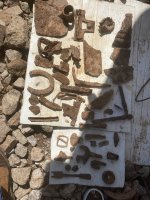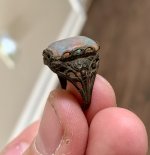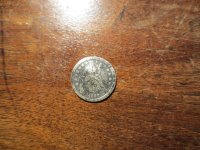Been researching GPR's lately. Wondering if they can find abnormalities in hard rock, like pockets or small seams. I know they are pricey, but 1 good find would pay for it.
Anyone have a used one for sale or has anyone ever used one?
Thanks in advance!
Anyone have a used one for sale or has anyone ever used one?
Thanks in advance!


 Even something you might THINK would be shape-revealing (like a horseshoe, for instance), are still nothing but a messy blotch of pixels.
Even something you might THINK would be shape-revealing (like a horseshoe, for instance), are still nothing but a messy blotch of pixels.



